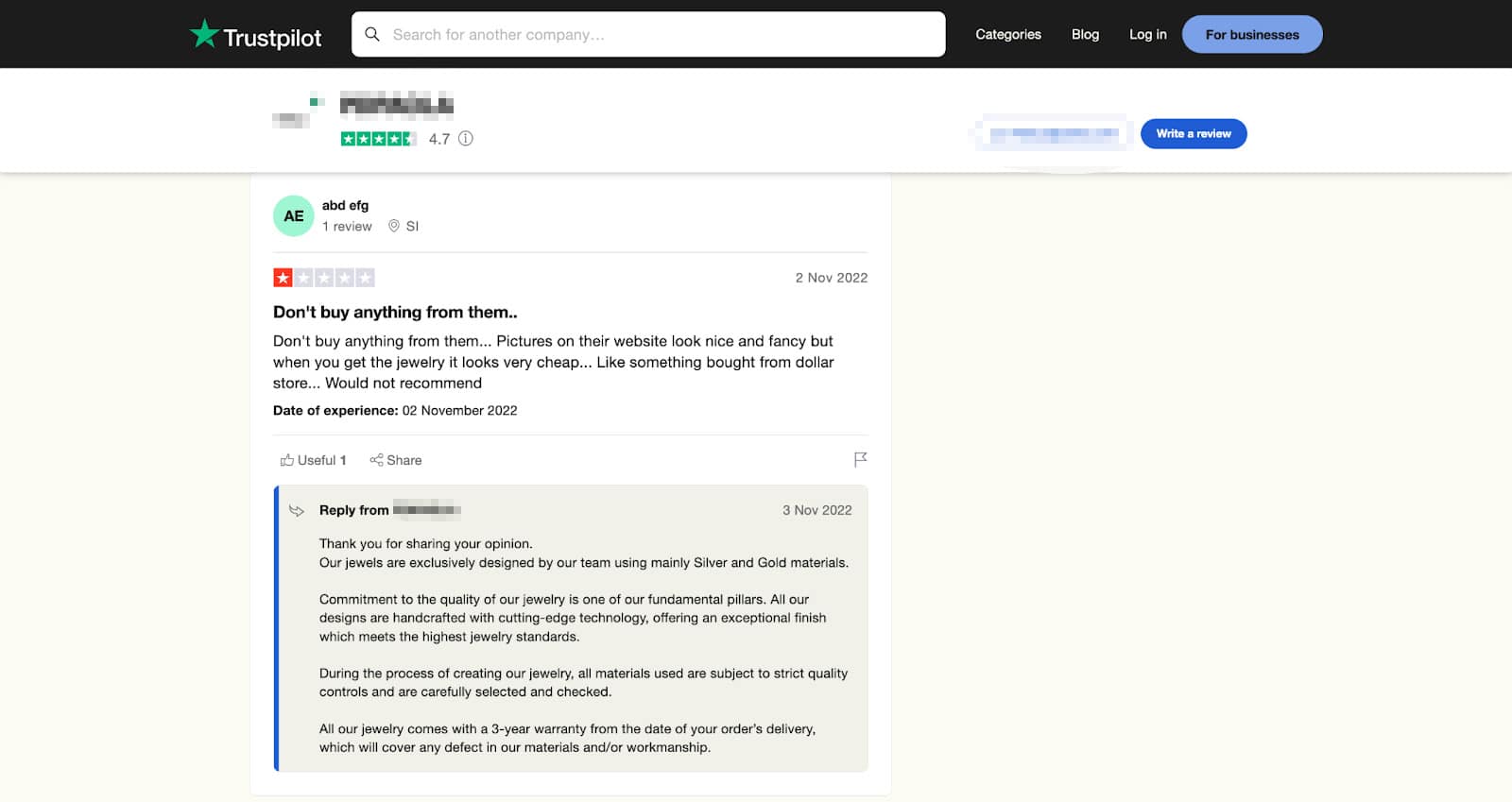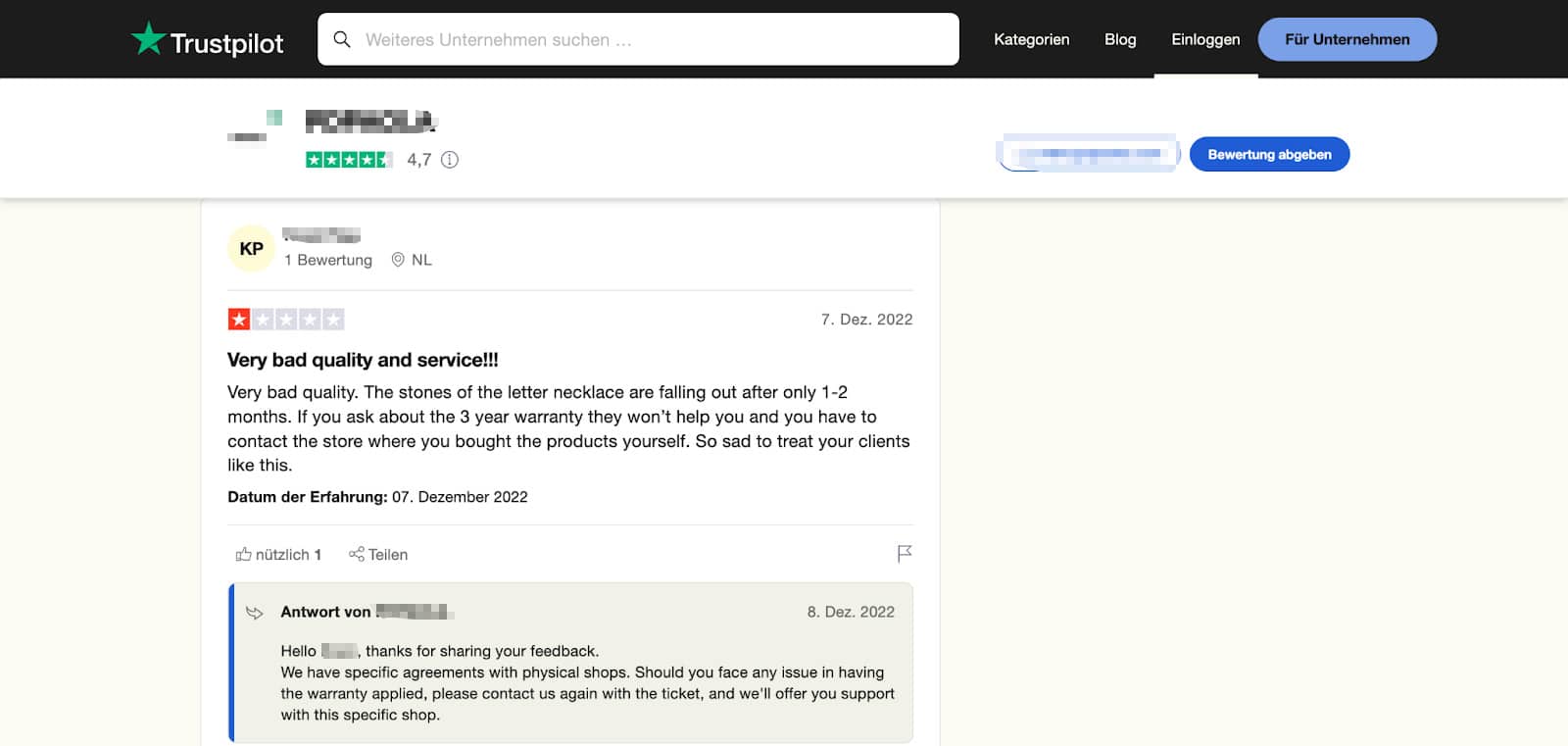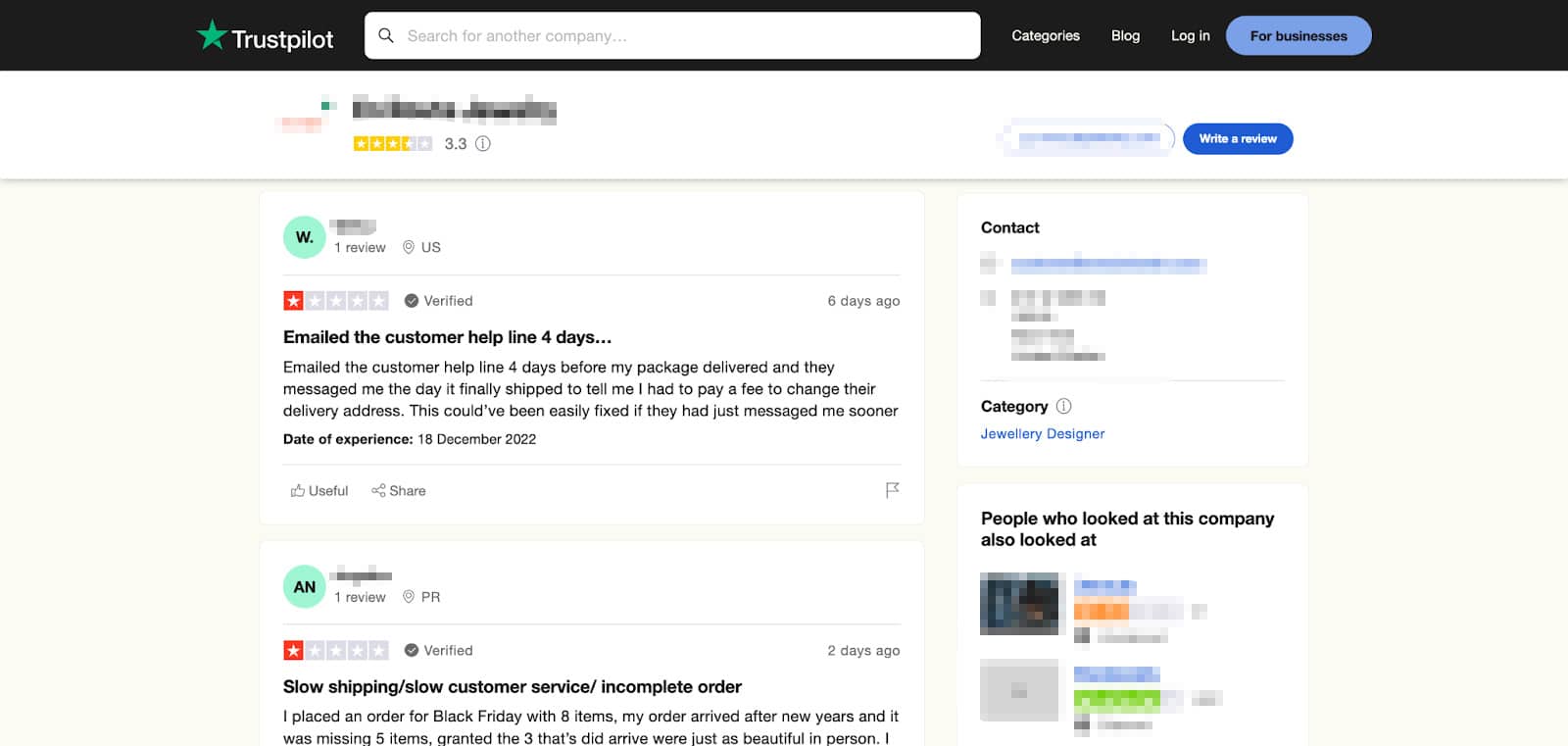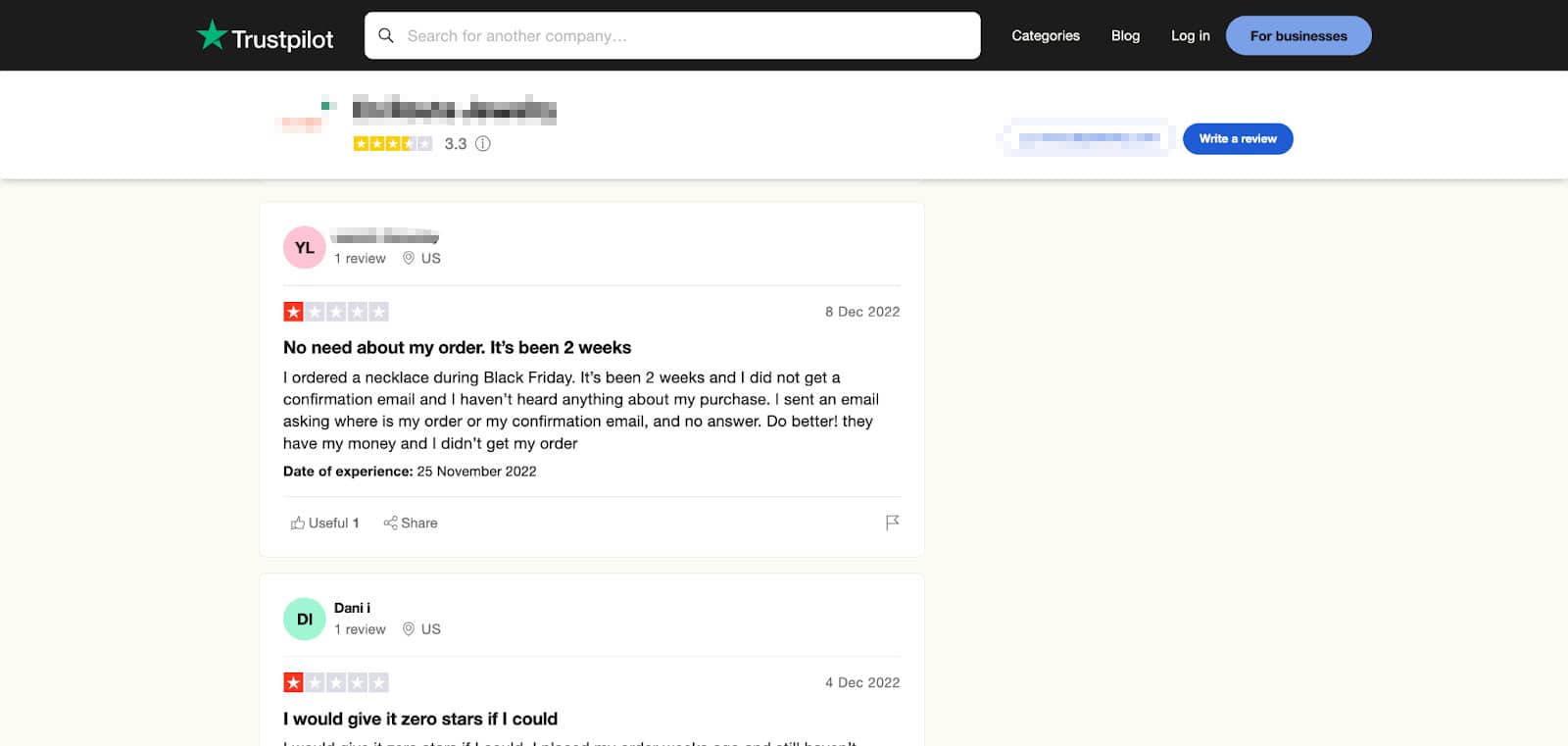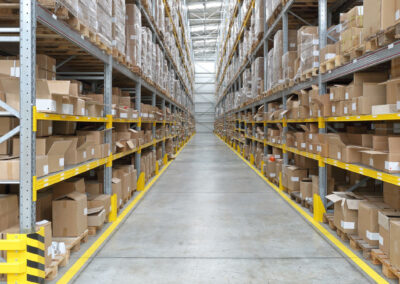Analysis: What are the reasons for the bad ratings?
It is immediately apparent that the reasons for customers to give a bad rating differ significantly between the five-star store and the three-star store.
They can be broken down as follows:
Defects in the product
The first store we looked at gets most of its bad ratings because shoppers are dissatisfied with the quality of the: E.g. necklaces fall apart or paint from earrings came off.
Here, work must be done on quality assurance, a serious discussion must be held with the supplier, or the company’s own product must simply be improved. The main thing to remember here is that all options for avoiding negative ratings in the future are entirely in the hands of the company. All deficiencies are with the manufacturer and can be remedied on the company’s own initiative.
Therefore, the store receives one or two negative reviews, but it can always react to them and solve the problem – and thus achieve its high number of stars.
Errors in logistics and incorrect management of delivery time expectations
Store number two, on the other hand, has to contend primarily with problems in logistics: goods are delivered incorrectly or reach customers only after a long delay. The delivery times do not correspond to the figures advertised by the store, for example, because incorrect information about the availability of goods is shown or missing altogether. If a rating request is sent far too early, before the goods reach the customer, the bad rating is almost pre-programmed.
A quick look at the company’s FAQ page reveals that the logistics are handled manually (“Send an e-mail to…”). On the other hand, it is obvious that the store – like almost every other larger online store – relies on cooperation with a fulfillment partner.
This creates a veritable problem for the company’s social proof. The store we looked at regularly receives bad ratings, without being able to change anything on its own and without enormous effort. This is because the causes of the criticism are not internal, but externally lie with the fulfillment service provider.
For the time being, the store’s hands are tied. Unlike Amazon, which was also let down by its fulfillment partners during the 2013 Christmas season and subsequently created its own logistics department, a medium-sized company hardly has the necessary budget for such an action.
Every single bad review is therefore permanent. An opportunity to subsequently satisfy customers does not exist for the store, apart from the adjustment of delivery time details.
Reactions: Responses to negative ratings
The striking difference between in-house reasons for bad ratings and external reasons can be seen very clearly in the way our two sample stores respond to criticism
The five-star store regularly responds directly to its critics, promises to find a solution quickly, and offers incentives for repeat purchases. In the case of the low quality, for example, the store writes:
“Thank you for sharing your opinion. Our jewels are exclusively designed by our team using mainly Silver and Gold materials. Commitment to the quality of our jewelry is one of our fundamental pillars. All our designs are handcrafted with cutting-edge technology, offering an exceptional finish which meets the highest jewelry standards.
During the process of creating our jewelry, all materials used are subject to strict quality controls and are carefully selected and checked. All our jewelry comes with a 3-year warranty from the date of your order’s delivery, which will cover any defect in our materials and/or workmanship.”


